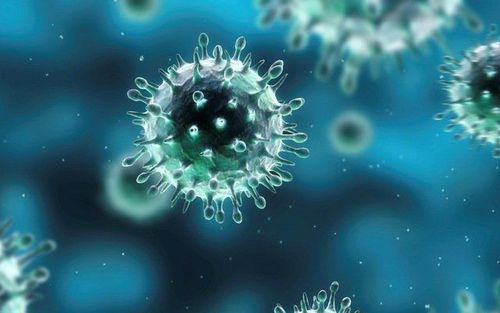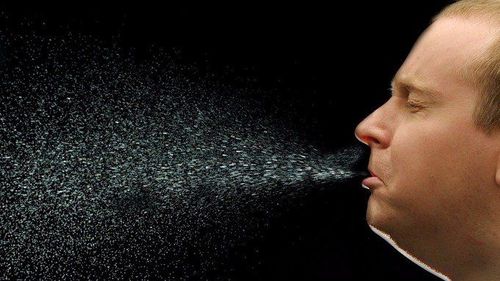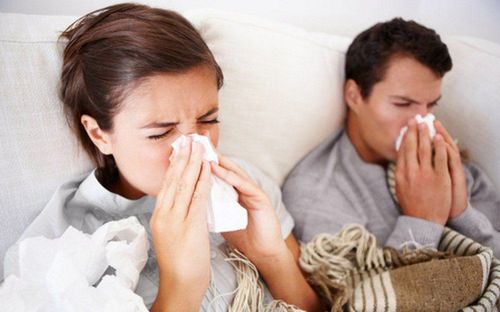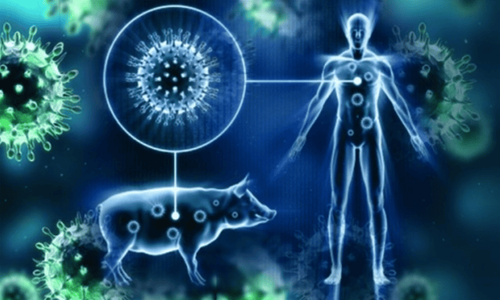This is an automatically translated article.
Colds and flu are two completely different diseases but they are both contagious and are caused by viruses. To prevent the disease, you can change the habits in your daily life and complete immunization with vaccines to produce antibodies against the disease.
1. Signs to recognize flu and cold
Symptoms of flu and cold have many similarities, but the flu is often more severe and obvious.
1.1. Signs of a cold Cold symptoms usually last 7 to 10 days. People with colds usually start off with mild symptoms and worsen in the following days. A cold can be quite exhausting, but not severe enough to interfere with daily activities.
Common cold symptoms include:
Fatigue Cough Runny nose Watery or itchy eyes Sore throat Headache Fever, common in children, rarely seen in adults Most people don't come to see it doctor to be diagnosed with a cold. The diagnosis of a case of a cold is mainly based on clinical symptoms and rarely requires in-depth testing. Indications for laboratory tests are often used to rule out other causes of similar symptoms.

Các triệu chứng của cảm lạnh thường kéo dài từ 7 đến 10 ngày
1.2. Symptoms of the flu are different from those of a cold, and often appear at the same time and are quite severe right from the first days of illness. Many people with the flu complain of fatigue that comes on quickly and affects their lives.
Symptoms of flu include:
High fever Headache Body aches General fatigue Cough Sore throat Runny nose Watery Vomiting and/or diarrhea , often seen in children. Unlike a cold, the diagnosis of a cold requires a number of laboratory tests. Patients should recognize flu-like symptoms and see a doctor within the first 24 hours of illness. People at high risk for complications from the flu should start treatment as soon as possible to prevent severe symptoms and complications and reduce hospital admissions.
2. What causes colds and flu
Both colds and flu are caused by viruses. The disease is spread through airborne droplets that appear when coughing and sneezing, coming into contact with saliva, and touching contaminated surfaces.

Cảm lạnh và cảm cúm đều do virus gây ra
2.1. Causes of colds More than 200 different viruses can cause the common cold. Rhinovirus is the most common group of viruses, in addition to some other pathogens that can be mentioned are RSV, parainfluenza. The human body's immune system usually fights and remembers cold viruses after each exposure, but there are always other disease-causing viruses that exist in the external environment that cause similar symptoms.
2.2. Influenza virus is the causative agent of the common cold. There are many different strains of influenza, and they frequently mutate to create new subtypes and variants. Influenza viruses are classified into 3 main groups, including influenza A viruses, influenza B viruses, and C viruses, but only influenza A and B viruses cause seasonal flu.
All ages can catch the flu. However, high-risk groups will present with more severe symptoms. At-risk groups include pregnant women, the elderly, children under 5 years of age, and people with chronic medical conditions such as cardiovascular disease, asthma or diabetes.
3. Measures to prevent colds and flu
Colds and flu can be prevented with these simple measures:
Use quick hand sanitizer: Alcohol-based hand sanitizers have become increasingly popular in recent years. An effective hand sanitizer should contain about 60% alcohol in its total ingredients. This is the concentration required to kill pathogens. However, people should not overuse quick hand sanitizer. The best time to take it is usually after using public transport, right after getting home, or before eating. The average frequency of use is about 1 to 2 times a day. Wash hands thoroughly with soap: Washing hands after using the toilet and before eating is an important measure in preventing colds and flu. However, according to statistics, only about 5% of cases of hand washing long enough to kill bacteria and two in three people find it annoying to have to wash their hands with soap. Therefore, it is not necessary to wash hands often with soap after each contact such as shaking hands, instead, it is necessary to remember important times to wash hands such as after going to the toilet and before eating. Turn off the faucet with clean paper: The faucet handle is the dirtiest place in the bathroom because it contains a lot of bacteria. Use a tissue to open the bathroom door and turn off the faucet after washing your hands with soap and water. Avoid using hand dryers: These types of machines not only make loud noises, but they can also be dangerous to human health. Many studies have shown that dryers are able to spread bacteria 1,300 times faster than using paper towels. Therefore, after using the toilet, priority should be given to using paper towels to dry hands. Press the elevator button with your elbow or sleeve: The buttons on the floors in the elevator are the places most people touch, a position that contains a lot of bacteria. Therefore, it is necessary to avoid touching the buttons directly inside the elevator. Avoid contact with sick people: It is important to explain in advance to the sick person that the act of not shaking hands or not hugging is not meant to be rude but is a way to protect the health of others. Experts also agree that avoiding contact with friends or relatives when they have unusual symptoms such as coughing and sneezing.

Tránh tiếp xúc với những người bị ốm để giảm thiểu nguy cơ mắc bệnh
Do not touch your face: Touching your eyes, nose and mouth is one of the ways to spread germs. In fact, we touch our faces many times without even realizing it, an average of about 16 times per hour. Use personal exercise mats: In exercise classes, shared practice mats are home to a lot of disease-causing bacteria. Be sure to clean the training mat after each use with disinfectant solutions. Cleaning exercise equipment in the gym: Exercise is a necessary job, playing an important role in supporting the development of the body's immune system. However, it is a fact that exercise equipment is often quite dirty. One study found that cold viruses are present on about 63% of gym equipment. Protecting the body from disease-causing microorganisms by cleaning equipment and exercise machines before use is essential. Wearing a mask in crowded places: Using a mask when going into crowded places is a necessity equivalent to wearing a mask when in contact with sick people. The fabric layers of the mask are diaphragms, minimizing contact with respiratory droplets when coughing, talking, and sneezing. Vaccination against seasonal flu: Vaccination is an effective, active prevention method that has a role in reducing influenza-related mortality and hospitalizations. Vinmec International General Hospital is currently providing vaccines to help prevent flu. The vaccination system at Vinmec International General Hospital has the following advantages:
Highly qualified doctors and other medical staff with extensive experience in vaccination Vaccinations are Thorough examination and consultation before injection, as well as continued follow-up after injection. The emergency team is always on hand and ready to handle emergency situations that occur before, during and after vaccination. Vaccines against colds and flu have a clear origin, guaranteed quality and are preserved according to the process with a modern machinery system. The system of vaccination rooms is built with a cool, modern design, creating a feeling of comfort and friendliness.
Please dial HOTLINE for more information or register for an appointment HERE. Download MyVinmec app to make appointments faster and to manage your bookings easily.
Reference source: verywellhealth.com












